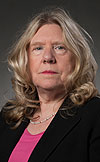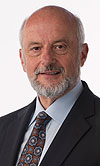|
Have a safe day!
Tuesday, March 13
1:30 p.m.
Research Techniques Seminar - Curia II
Speaker: Francois Vasey, CERN
Title: Prospects for Future High Speed Interconnects and
Applications in High Energy Physics
3:30 p.m.
DIRECTOR'S COFFEE BREAK - 2nd Flr X-Over
4 p.m.
Accelerator Physics and Technology Seminar -
One West
Speaker: Igor Meshkov, JINR
Title: Progress and Status of the NICA Project at JINR
Wednesday, March 14
1:30 p.m.
Particle Astrophysics Seminar - Curia II
Speaker: Jeter Hall, Fermilab
Title: How to Discover WIMP Dark Matter
3:30 p.m.
DIRECTOR'S COFFEE BREAK - 2nd Flr X-Over
4 p.m.
Fermilab Colloquium -
One West
Speaker: Nergis Mavalvala, Massachusetts Institute of Technology
Title: Quantum Opportunities in Gravitational Wave Detectors
Click here for NALCAL,
a weekly calendar with links to additional information.
Upcoming conferences
|
|
Tuesday, March 13
- Breakfast: Bagel sandwich
- Chicken & rice soup
- Meatball sub
- Smart cuisine: Beef stroganoff
- Smart cuisine: Chicken stew w/ dumplings
- Peppered beef
- Assorted calzones
- Nachos supreme
Wilson Hall Cafe Menu
|
|
Wednesday, March 14
Lunch
- Cornish game hens w/ mushroom sauce
- Wild rice
- Caramelized carrots
Friday, March 16
Closed
Chez Leon Menu
Call x3524 to make your reservation.
|
|
Fermilab's core computing services in transition
 |
|
Vicky White |
Vicky White, Associate Laboratory Director for Computing, wrote today's column.
In these challenging budget times, it is important that the laboratory provides computing services to its employees and users in the most cost-effective and efficient way possible. Currently a number of core computing tasks, including the Service Desk, desktop support and some underlying services, are performed by a combination of Fermilab employees and contractors from at least four different companies. In an effort to streamline operations we have combined all of these functions into one contract for on-site managed computing services. The contract was competitively bid and last week it was awarded to Dell Services Federal Government Inc., a wholly owned subsidiary of Dell. Starting today, we will begin a 90-day transition period to full operations of these core computing tasks by Dell.
Seventeen employees in the Core Computing Division are affected by this transition of their job functions to Dell. The affected employees will remain employed by Fermilab for 60 days, during which time they may apply for positions with Dell, who will be recruiting staff to meet their service commitments to the laboratory. They may also apply for posted Fermilab positions.
We are confident that Dell's experience and professional approach will result in a smooth transition for the laboratory. Starting today, the Computing Sector will use a variety of mechanisms to communicate to the laboratory the details of the transition and what you can expect from the new approach to delivering services.
|
In memoriam: Steve Barath
Former Fermilab employee Steve Barath, 76, died on Friday, March 9. He worked at the laboratory from 1971 to 1997 in TD, as an Operations Specialist.
Visitation will take place from 2:30 p.m. to 6:30 p.m. on Wednesday, March 14, at the Dieterle Memorial Home. The memorial service will come immediately afterv visitation and a reception will follow.
Please click here to read Barath's full obituary. For more information, please call 630.897.1196.
|
Hawk gives cold shoulder
 |
|
This hawk played camera shy in the Main Ring, hiding its face. Credit: Gary Smith, FESS. |
|
For physics postdoc, new evidence of things not seen
From the newsroom of Northeastern University, March 12, 2012.
For more than two decades, Fermilab in Batavia, Ill., housed the world's largest particle accelerator — the Tevatron Collider — which allowed scientists to study the most elementary units of matter. Last September, Fermilab shut down the Tevatron forever. International hopes of understanding some of the most fundamental mysteries of particle physics began to shift to CERN in Geneva, Switzerland, home of the younger, more energetic Large Hadron Collider (LHC).
To many, Fermilab seemed like old news — until last week.
At the annual Moriond Electroweak Conference in Italy, Northeastern post-doctoral researcher Joe Haley and other Fermilab physicists announced that data collected at the Tevatron over the last 10 years show a new hint of the Higgs boson — a particle never observed, but nonetheless essential to the standard model of physics.
"There's only so much information in [a single picture]," said Northeastern physics professor Darien Wood, who has worked at Fermilab and CERN since the 1980s. "But with a better magnifying glass you can get more information out of it."
Read more
|
|
An important scientific result
 |
|
Fermilab Director Pier Oddone
|
I must begin on a somber note, as this week we are completing the previous reduction in force program that had not been applied to the computing sector last year due to that sector's ongoing restructuring. Involuntary separations due to budget issues are very painful and we very much regret the loss of each employee. We have no choice, however, when the budgets do not maintain our desired staffing level.
Now, to news that is much more positive for our future neutrino program. Last week, the Daya Bay Reactor Neutrino Experiment reported the first definitive results on the rate at which muon neutrinos convert to electron neutrinos. The parameter that describes that conversion is sin2 2 θ13, and I will simply refer to it as θ13. For many years, and so long as we did not see this process occur, we worried that the rate described by θ13 could be zero or very low. Perhaps a new symmetry was at play to make the number zero or very small. Instead, θ13 is just about as large as it could be given the previous upper limit determined by the CHOOZ Reactor Experiment more than ten years ago.
This number is critically important because it is a fundamental parameter that determines our ability to study matter-antimatter symmetry in neutrino interactions. The violation of matter-antimatter symmetry in neutrinos is one of the most promising paths to understand why we live in a universe made of matter. Had θ13 been zero, then the physics program of the Long-Baseline Neutrino Experiment would have been more limited because it would not be able to study matter-antimatter symmetry. This large value of θ13 is the last missing piece to fall into place to make sure that we can achieve the full promise of LBNE. It is also great news for NOvA, confirming that the experiment has a very good shot at determining how the spectrum of neutrino masses is arranged – a critical question for grand unified theories and for the interpretation of other critical experiments such as neutrino-less double beta decay experiments that explore the nature of neutrinos.
The discovery that muon neutrinos convert to electron neutrinos comes after a set of exciting measurements that gave us very strong hints of a non-zero θ13 over the last year: results from the T2K experiment in Japan, MINOS at Fermilab and Double CHOOZ in France. While none of the experiments were definitive, their combination made a very strong suggestion that θ13 would be relatively large. The Daya Bay Neutrino Experiment was designed to measure the rate even if it was ten times smaller than the value recently reported. Because this goal was very ambitious and required a high-rate experiment, data was collected and analyzed quickly, only after a few weeks of running: a truly impressive feat!
|
|